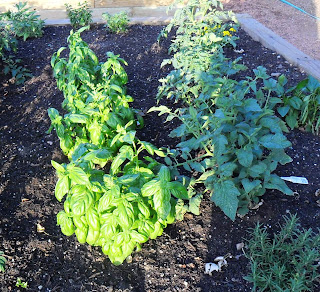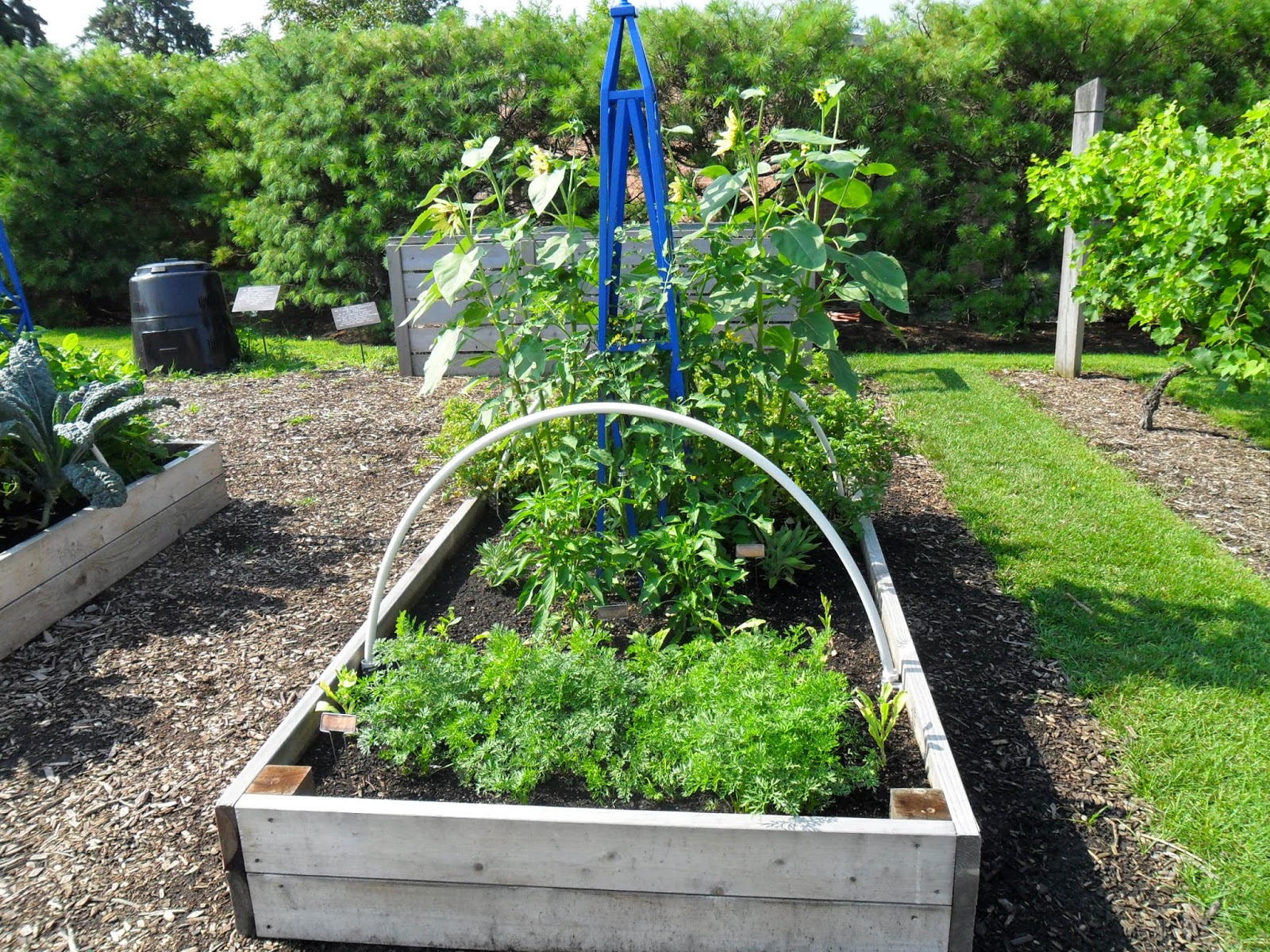In my family bland food was the norm. I longed for food to taste like it did in fancy restaurants. My mother however, was not interested in cooking, so as soon as I could cook without supervision, I was let loose in the kitchen. At first I worked with those herbs that I could find easily in the store, then I worked up to unusual herbs that I needed to grow myself. Today it is much easier to find fresh and dried herbs in the markets, but those elusive flavors from specialty herbs still require growing them yourself. So if you love to cook and enjoy experimenting with favors I recommend putting together a Culinary Herb garden for yourself.
Herbs to Choose
Garnish Herbs
 |
| chives |
The most useful herbs for garnishing are parsley and chives. You can pluck a leaf of parsley and place it on a plate. Nibbling the herb after a meal takes away food breath.
Fresh chives clipped onto a baked potato or
snipped into a salad add a tasty dimension with no fuss. These herbs are indeed readily available in grocery stores, but in one's own garden, you can have them fresh daily, whenever you need to pluck a few stems for use.
These are also perfect herbs for a container, so you don’t need a large garden, just place a pot by the kitchen door.
Fresh chives clipped onto a baked potato or
 |
| Parsley border |
These are also perfect herbs for a container, so you don’t need a large garden, just place a pot by the kitchen door.
Basic Herbs for the
Experiment with the herbs grown in the garden. The basic herbs most cooks use are:
- sage
- rosemary
- parsley
- chives
- dill
- marjoram
- basil
- tarragon
- oregano
 |
| Dill |
Choosing which herbs to grow is a matter of taste and experimentation. Usually only one or two plants of any variety are needed. Sage, for instance, can grow into a very leafy low shrub. A family of three or four likely won't need more than one plant.
 |
| sage |
 |
| Sweet basil |
Exotic Herbs
 |
| Holy Basil in bloom |
 |
| Pineapple sage flowers |
I grow Pineapple Sage and Lemon thyme because the tastes of these are so fleeting that even if you can find a source the quality is not always as good as it can be when you grow them yourself. Choose one or two exotics to start with and experiment with them, then slowly add more to your garden.
Planting the garden
 |
| Basil & tomatoes together in rows |
Requirements for a Healthy Herb Garden
For the most part, herbs require full to partial sun and an open location with good drainage. Even though they do best in open locations, they still need protection from those drying winds. A hedge or row of trees several feet away would be a perfect location, depending on which way the wind blows in the garden location.
Herbs are not demanding when it comes to soil conditions, but clay which will hold too much water should be augmented with sand; and sand which does not hold enough water should be improved with compost.
Till the soil down 15 inches to make it loose for the plant roots and plant according to spacing directions provided by the nursery or a good plant book. Since spacing differs from plant to plant and are based on the potential of the plant to spread sideways as well as up, you need a bit of guidance for this or you could end up with an over crowded garden. I recommend Rodale’s Encyclopedia of Herbs for spacing information and sun requirements. Mulch around the plants to preserve moisture and keep down on weeds.
 |
| Thyme bed spaced with room to grow |
The Herb Garden
Herb gardens can be traditionally laid out with raised beds, decorative patterns, or as a cottage or wildflower garden.
You can even plant them in rows as the gardener would plant a vegetable garden.
Whichever pattern chosen, nurturing the herb garden is most pleasurable pursuit. Walking around the herb garden lightly touching the leaves can inspire recipes to suit the herb rather than herbs to suit the recipe.
 |
| thyme in a corner bed |
 |
| vegetable-style patch in a raised bed |
Whichever pattern chosen, nurturing the herb garden is most pleasurable pursuit. Walking around the herb garden lightly touching the leaves can inspire recipes to suit the herb rather than herbs to suit the recipe.
 |
| The Basil Bed at the Case Western Reserve Herb Garden |
Conclusion
Growing and nurturing a culinary herb garden gives you instant access to those special ingredients that add punch to a recipe. Even a few little pots of herbs on a balcony or in a kitchen window may be enough to get you started. The scents alone will create a fun experience in the kitchen and the wonderful foods created with these fresh ingredients will only make you yearn for more!


Herbs are not demanding when it comes to soil conditions, but clay which will hold too much water should be augmented with sand; and sand which does not hold enough water should be improved with compost.
ReplyDeleteclick here for free landscaping ideas.
It's really a great idea to grow one's own herb garden to get fresh herbs easily.Whether you’ve got a roomy garden, a small kitchen balcony or even a tiny window sill, growing your own fresh herbs is extremely easy.Thank you for sharing this.
ReplyDelete